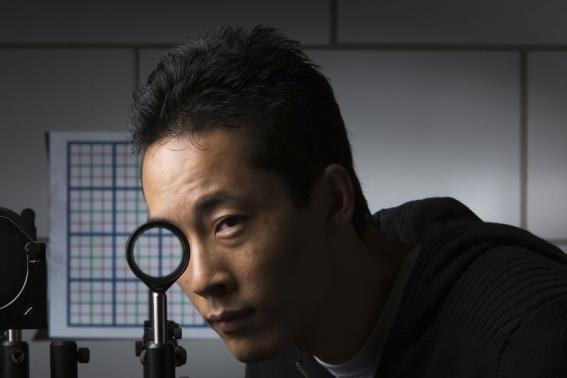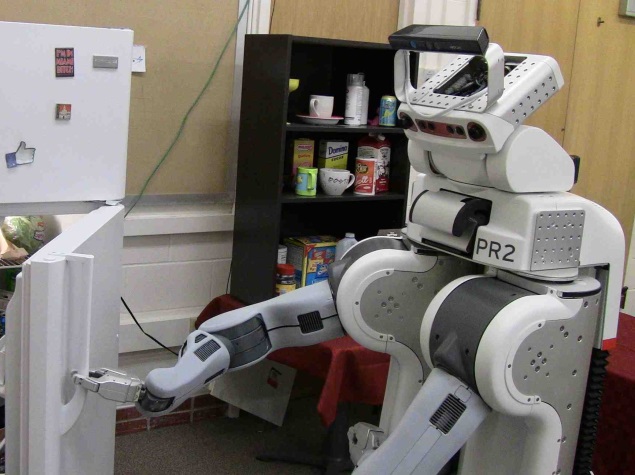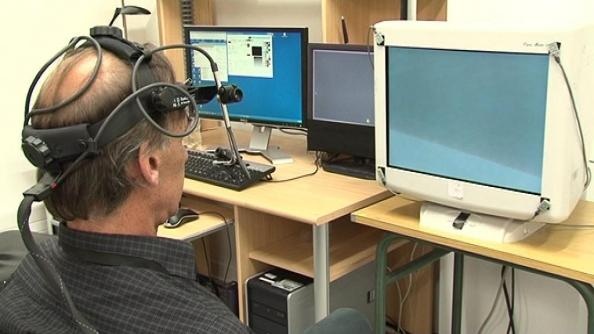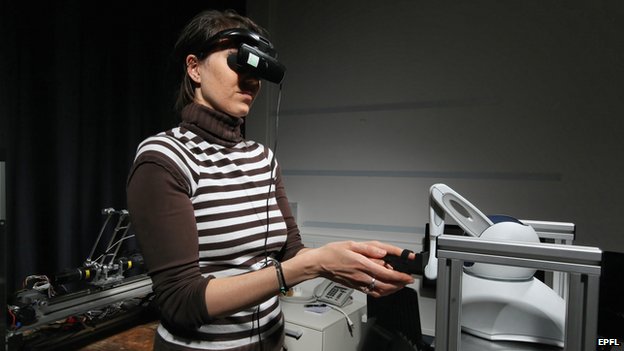https://ift.tt/1IIohUa
Every now and then you read the news and learn about a new technology that sounds too good to be true. Sometimes that’s the case and these supposedly miracle technologies are never heard from again, but other times they actually live up to their promise. Only time will tell whether the following technologies will meet expectations, but we really, really hope that they do.
10. Super-black Material
What if an object was so dark that you could look at it without actually seeing it? Scientists have succeeded in creating a material so black that the human eye can’t see it because it doesn’t know or understand what it’s looking at. The material’s made out of carbon nanotubes that were grown on pieces of aluminum foil, and it has record setting ability to absorb just about all visual light. The material gets its super-blackness from these nanotubes, because they’re extremely thin (each one is ten thousand times thinner than a strand of hair) and when they’re packed together no light particles can enter them.
This ground-breaking material has military purposes, and oddly enough it can also be used for the calibration of cameras. It’s also a great conductor of heat, and is about 10 times stronger than steel.
9. Hangover-free Beer
Imagine drinking a couple of beers without the fear that you’ll wake up in the morning with a headache. Australian scientists have started to make this dream a reality by developing a type of beer that keeps people hydrated while they’re drinking, and that’s so awesome we’re going to refrain from making a joke about how of course they’re Australian.
The concept is pretty simple — the booze loving scientists took electrolytes and mixed it in with two types of beer, then gave the mixture to volunteers to try out. The purpose was to eradicate or at least vastly lower the many risks that come with drinking a lot of alcohol. But be warned — even though the electrolyte-infused beer turned out to be around three times more hydrating than regular beer, a slight hangover effect might remain. The experiment also works best with beer that has low alcohol content, so we hope you like light beers. So it’s not perfect, but it’s still an interesting start.
8. Mind-reading Device
Ever wish you could tell what someone was thinking just by looking at them? It would be helpful in solving arguments, knowing which gifts to buy for birthdays and Christmas, and definitely not for anything less savory than that, how dare you accuse us?
Anyway, this might actually not be such a farfetched idea, since scientists in the United States have started developing a brain decoder designed to read minds. In a rather creepy explanation, researcher Brian Paisley said during an interview that the idea behind the decoder is to be able to hear people’s voices as they themselves hear it in their heads while, for instance, reading.
All of the volunteers used during development had undergone epilepsy surgery and had their brain activity mapped and recorded while reading words either aloud or silently from a screen. The exercise was meant to highlight how neurons react while reading. The decoder is yet to be finalized, but it’s hoped that when it’s complete it will be able to turn thoughts into visuals.
7. Optical Cloaking
Ever since Harry Potter became a phenomenon we’ve all wanted his invisibility cloak for, again, totally innocent and beneficial endeavors. Rochester scientists were as big of fans as any of us, and the cloak inspired them to come up with an invisibility cloak of their own. Special lenses developed by them can be used to hide large objects from view, so instead of a large cloth that you can wrap around yourself you’ll resemble an eye-doctor examining a patient. Still, the lenses are pretty awesome.
Used under the right circumstances, these lenses will be able to prevent accidents, assist during difficult surgeries and be invaluable in the military. The scientists have succeeded in cloaking several objects during their research, including a face and hand, all while still being able to see what’s behind the “missing” objects. They’re continuously working on enhancing the technology, and are pleased to announce that it won’t cost a fortune to own these lenses either.
6. Particles That Make You Breathe
Resuscitating a patient that’s stopped breathing is more difficult than it looks on Grey’s Anatomy. Without oxygen in the bloodstream there’s a high risk of brain damage and heart failure, so doctors are up against a very limited amount of time to help patients who suffer respiratory failure. Luckily, researchers have invented micro-particles that can oxygenate a person’s body when they stop breathing.
These particles can be injected into the bloodstream of patients, and will ensure that doctors will be able to keep people alive for at least half an hour while focusing on their attempts to resuscitate them. The particles consist of a layer of fats folded around oxygen gas. They’re stored in a liquid solution and are about four micrometers each in size. It’s hoped that the breakthrough will assist in saving millions of lives every year.
5. Robots That Understand Casual Language
We all want someone who understands what we’re saying no matter how we say it — someone who has the ability to read between the lines. If you’re struggling to find that person, you might be able to turn to robots for the understanding you need in the future. A Cornell scientist and his team have designed a robot that understands casual and ambiguous language.
Robots in general need very specific instructions to be able to perform tasks, and the instructions have to be given in clear, understandable language. However, this robot can fill in the blanks in spoken instructions. For instance, if you’re asking the robot to prepare you a hot plate of food but neglect to mention where the stove is, that won’t be a problem. The robot will know that the stove is the object that will heat the food. You also won’t have to mention that the stove must be turned on, as the robot will do it anyway.
The robot has a 3D camera that helps it scan its surroundings and match the objects it sees with its instructions. The creators wanted a robot that’s capable of showing initiative, presumably because none of them have seen a Terminator movie. There are many improvements still to be made, but as far as the team at Cornell is concerned they’re on their way to building the perfect robot.
4. Using Your Eyes to Draw and Write
A French scientist has developed a revolutionary system that allows people who are wheelchair bound to draw or write on their computer screen using their eye movements. After a training session that helps patients gain some control over their eye movements so that the end-result will be legible, they’re able to write and draw to their heart’s content, or at least until their eyes get sore. A camera records all of their eye movements, which is then translated to text on a computer screen. It’s thought that this system would also be of great value in the professional world, where those who need to control their eye movements to a T can make use of it.
3. Ghostly Presence
Have you ever felt a presence in an empty room, and thought you either met a ghost or were going crazy? Well, scientists are adamant that it’s the latter. An experiment led to the creation of a “ghostly presence” in a laboratory which, according to them, proves that feeling the presence of a paranormal entity is entirely a figment of the imagination.
In order to bring the experiment to life, so to speak, they took scans of 12 peoples’ brains. All of them had some form of neurological damage to the part of the brain that controls movement and spatial awareness. All of these people also had “an experience with an unseen ghost” at some point in their lives. These statistics are probably not coincidences.
The scientists also conducted an experiment on 48 people who were perfectly healthy. They blindfolded them, placed robots in front of them, and asked the volunteers to move the robots around. While they were doing this, a second set of robots behind the line of volunteers would mimic these movements. When the front and back movements were in sync the volunteers had no complaints. However, as soon as a delay took place some became spooked, saying that they felt the presence of several apparitions in the room. The scientists wanted to prove that when people feel an entity in the room it’s their own brain confusing the position of the person’s body and then identifying the body as belonging to an unseen being.
2. Solar-powered Bionic Eye
A light-powered eye could prevent blindness and restore sight to the already blind. It seems that a group of experts from Stanford got their inspiration from solar panel technology, as the technology is implemented as a retinal photovoltaic implant placed at the back of the eye. Infrared light is then beamed onto the eye of the patient. The infrared light, which comes from a special pair of glasses, produces an electric signal that stimulates the nerves and powers the bionic eye.
Researchers are exited about this technology, as it may replace older and more complex ways of restoring sight. Very early clinical trial results saw two patients who were completely blind being able to see light and make out shapes.
1. Dissolvable Electronics
An assistant Iowa State mechanical engineering professor has developed transient electronics, which have the ability to dissolve on command. The idea is that if an electronic device becomes dangerous or a liability, it would be possible to destroy it. For instance, if you’ve had you’re credit card stolen, you can command it to self-destruct before anyone has the chance to use it.
The professor, Reza Montazami, also believes that this technology would be invaluable to the medical industry. He wants doctors to use these electronics to help heal patients and then self-destruct when the job is done. This would mean less invasive surgery, which is easier on the patient’s body. Montazami also believes that his invention would be useful to the military, as classified information can be sent and received, then destroyed on command.
Keep preparing yourself for the future with more of our science articles!
TECH
TRENDS,AMAZING
via Toptenz.net http://www.toptenz.net
May 13, 2018 at 08:13PM
.png)











No comments:
Post a Comment